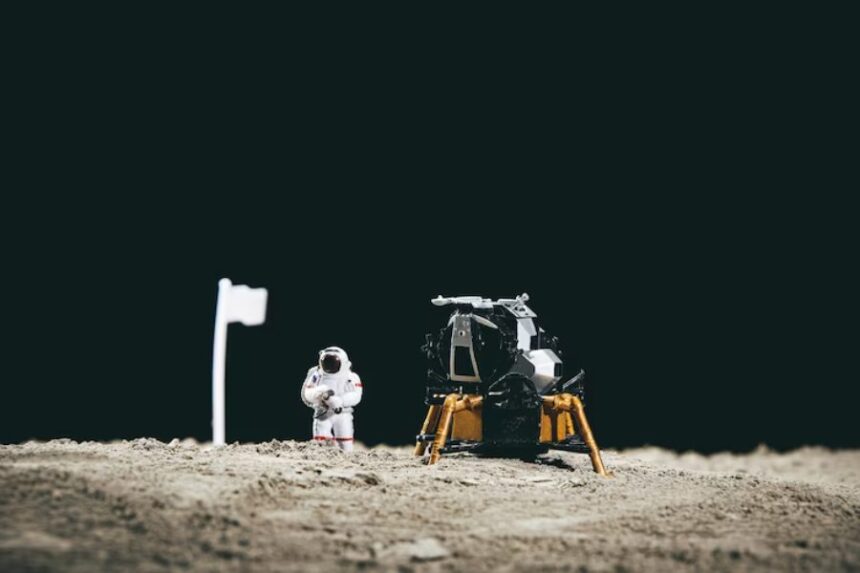What time is the moon landing? This question continues to spark excitement among space enthusiasts worldwide. Whether you’re eagerly awaiting NASA’s next Artemis mission or revisiting the unforgettable Apollo 11 moment, the exact timing of a lunar landing offers a front-row seat to human progress in space exploration.
- The History Behind Moon Landings and Their Timelines
- How the Time of a Moon Landing Is Decided
- Lunar Daylight and Surface Safety
- Orbital Trajectory and Launch Windows
- Mission Objectives and Crew Readiness
- Communication and Ground Support
- Adjustments and Flexibility
- About What Time Is the Moon Landing
- Why People Ask About the Moon Landing Time
- Upcoming Lunar Missions and Their Landing Times
- Artemis III Landing Date and Time Projections
- SpaceX and Private Landers: What to Expect
- China’s Chang’e Series
- India’s Chandrayaan Program
- International Collaborations
- Final Thoughts
- FAQ’s
Knowing what time the moon landing is, more than curiosity—it helps viewers experience history as it unfolds. From precise planning by NASA to real-time tracking tools, each detail reflects the complex coordination behind these missions. Timing is everything in space, from astronaut safety to global broadcast readiness.
In this article, we explore the moments that define lunar landings, explain how schedules are set, and show how you can stay updated on future moon touchdowns.
What time is the moon landing?
It depends on the mission. For instance, the Artemis III moon landing is projected for 2026, with timing announced closer to launch. Historical landings like Apollo 11 happened at 20:17 UTC on July 20, 1969. Always check NASA or space agency channels for updated landing times.
The History Behind Moon Landings and Their Timelines
When talking about what time the moon landing is, it’s crucial to look at the historical context. The Apollo missions, especially Apollo 11, remain iconic because of their groundbreaking nature and televised landings that united millions globally. Neil Armstrong’s famous step happened precisely at 02:56 UTC on July 21, 1969, even though the lunar module touched down at 20:17 UTC the previous day. The timing was strategic, allowing for checks and preparation.
Other missions, such as Apollo 12 and 14, followed strict schedules determined by lunar daylight cycles and communication windows. NASA planned landings during early lunar mornings to ensure optimal lighting for astronauts and instruments. This consistency in scheduling reveals that what time the moon landing isn’t random—it’s the result of precise engineering and planning.
Soviet Luna missions and China’s recent Chang’e landings also illustrate how time coordination is vital. The Chang’e 4 landed on the moon’s far side at 02:26 Beijing Time, a milestone for international lunar research. Each agency considers earth-based tracking, sun angles, and mission duration.
Modern missions like Artemis or private endeavors by SpaceX and Blue Origin further underline the importance of timing. With live global broadcasts and intricate docking sequences, the answer to what time the moon landing is can also indicate how space missions are shared experiences today.
Finally, public interest in moon landings has surged due to accessible livestreams and space apps. Precise landing times are published in UTC, often accompanied by countdown clocks. It transforms spacewatching into a real-time, borderless event.
How the Time of a Moon Landing Is Decided
The timing of a moon landing is far from arbitrary—it is a highly calculated process involving science, technology, and logistics. Multiple critical factors come into play to ensure a safe and successful touchdown while aligning with international coordination and public engagement.
Lunar Daylight and Surface Safety
Landings are typically scheduled during lunar dawn. This period offers ideal lighting conditions, reducing the risks posed by long, deep shadows on the moon’s rugged terrain. Proper visibility is essential for both automated landing systems and human astronauts navigating the surface.
Orbital Trajectory and Launch Windows
The Moon and Earth must align in a way that allows for an efficient trajectory. Launches, transits, and descent paths are synchronized within narrow orbital windows, meaning that even slight changes in timing could disrupt the mission’s path or success rate.
Mission Objectives and Crew Readiness
Moon landings are also planned around the astronauts’ operational timelines. Extravehicular activities (EVAs), scientific experiments, and rest cycles influence the schedule to ensure astronauts are alert and well-prepared.
Communication and Ground Support
Agencies like NASA plan landings during periods when they can maintain uninterrupted communication with the lunar module. This is crucial for real-time monitoring, data collection, and safety management.
Adjustments and Flexibility
Even with a fixed schedule, unexpected changes like weather delays or technical anomalies can impact the final landing time. Flexibility is built into the mission design to account for these potential disruptions.
About What Time Is the Moon Landing
What time the moon landing is requires looking at several key factors, from historic missions to modern-day planning. Each element contributes to how and when these lunar milestones take place.
Historic Moon Landing Times
The most iconic lunar landing—Apollo 11—occurred at 20:17 UTC on July 20, 1969. This precise timing marked the beginning of a new era in space exploration and set the standard for future missions.
Future Moon Landing Schedules
Artemis III, NASA’s upcoming crewed mission to the Moon, is slated for 2026. However, the specific landing time will be determined as the mission window approaches.
Key Timing Considerations
Space agencies use Coordinated Universal Time (UTC) to standardize mission schedules globally.
Tracking and Viewing Tools
NASA TV and official websites provide real-time coverage.
Mobile apps and Twitter updates offer countdowns and alerts.
Most landings occur 3–5 days after launch, depending on transit trajectory.
Livestreams often include audio, video, and mission telemetry for public viewing.
Why People Ask About the Moon Landing Time
The timing of moon landings matters due to both scientific and public interest reasons. Spectators around the globe coordinate their schedules to witness history. For many, watching the first step live is a bucket-list event. Additionally, the precision in timing reflects the intense preparation that precedes every mission.
Planning and communication require pinpoint coordination. Engineers must know exactly when the lunar module will descend. The time also affects media coverage, emergency support readiness, and coordination between ground control and astronauts. Timely awareness is essential to ensure successful mission milestones.
Lunar conditions are harsh, and timing determines when areas receive sunlight. Agencies want to avoid lunar night, where temperatures drop drastically. Thus, moon landings happen during a narrow sunlight window to enhance visibility and safety.
The popularity of space events has turned mission schedules into global happenings. Social media campaigns, YouTube streams, and classroom watch parties all revolve around what time is the moon landing. Time, in this case, connects people in every part of the world through a shared human endeavor.
Upcoming Lunar Missions and Their Landing Times
As lunar exploration accelerates, multiple countries and private companies are planning missions. Each has unique timelines for their moon landing schedules.
Artemis III Landing Date and Time Projections
The Artemis III mission is expected to land humans back on the moon around 2026. The actual time is the moon landing for this mission will be announced by NASA closer to launch.
SpaceX and Private Landers: What to Expect
SpaceX’s Starship is testing moon landing capabilities under NASA’s Human Landing System (HLS) program. While exact times vary, test schedules are released pre-launch.
China’s Chang’e Series
China continues lunar exploration with Chang’e 6 and future crewed missions. These typically land in Chinese Standard Time (CST), but UTC equivalents are also published.
India’s Chandrayaan Program
India’s ISRO plans further moon missions with Chandrayaan-3’s success. Exact timings depend on mission goals and landing region.
International Collaborations
Joint missions by ESA, JAXA, and NASA will have coordinated timings for lunar landings. These will be shared across global platforms.
Final Thoughts
More than a schedule—it reflects our collective journey into space. Each mission’s timing is deliberate, built on science, engineering, and public engagement. Whether you’re tuning in for history or preparing educational content, knowing the exact time makes the experience immersive.
As we approach a new era of lunar exploration, this question will only become more popular. With Artemis, international partnerships, and private ventures aiming for the moon, expect more coordinated efforts to publish and celebrate precise landing times. Remember to keep track via NASA’s official website or space agency feeds to never miss a lunar moment again.
FAQ’s
How can I find out the exact time of a moon landing?
NASA and other official space agencies publish the exact UTC landing times on their websites, mobile apps, and through live mission updates.
Are all moon landing times in UTC?
Yes, using UTC ensures consistency and synchronization across global time zones for mission planning and public viewing.
Can moon landing times change after launch?
Absolutely. Factors like trajectory adjustments, technical delays, or real-time mission decisions can shift the exact landing schedule.
Why do moon landings happen at night or early morning?
These timings align with optimal lunar lighting and communication availability between the
Where can I watch a moon landing live?
You can stream moon landings live via NASA TV, YouTube, and space agency apps, which include audio, telemetry, and expert commentary.




